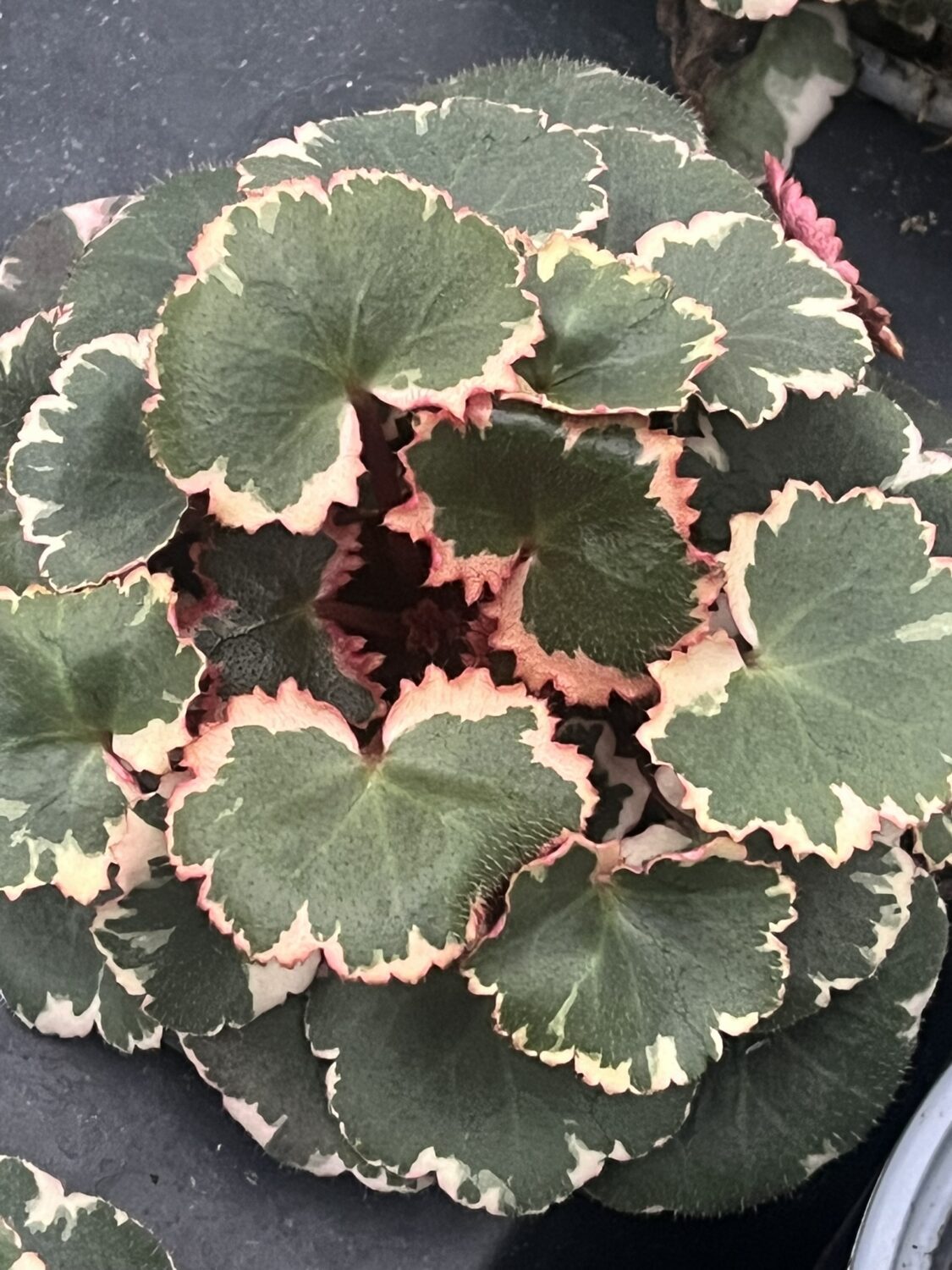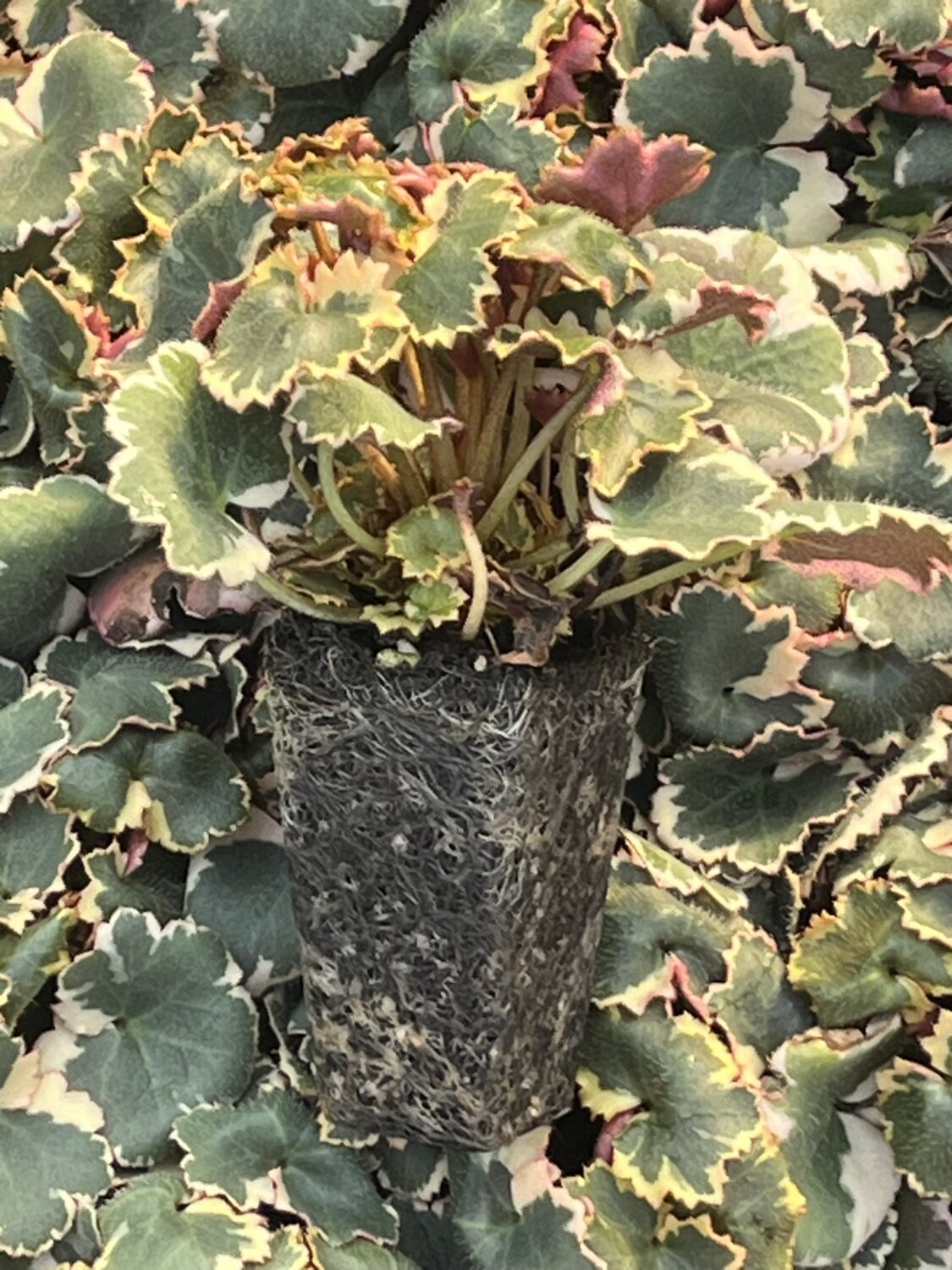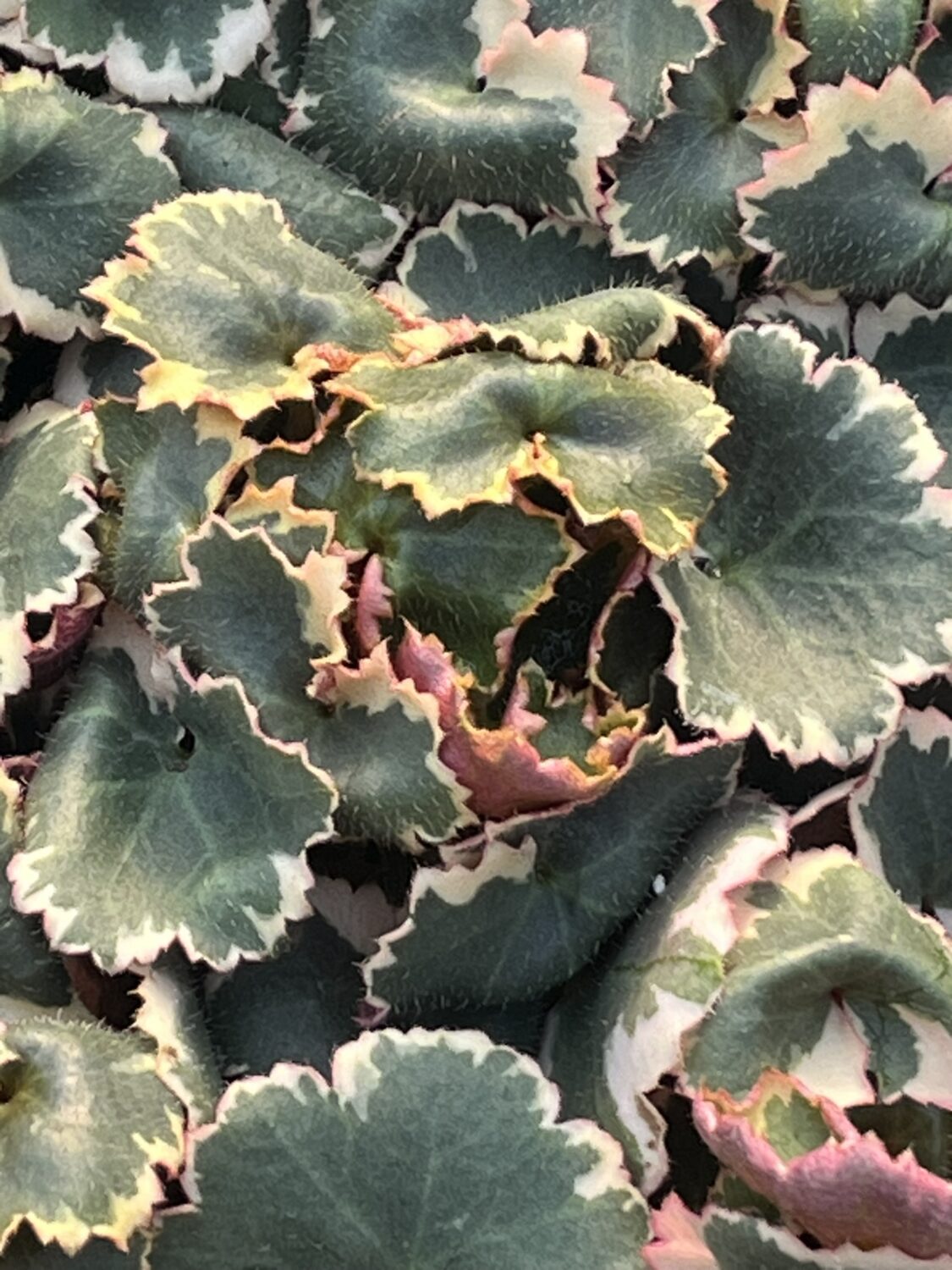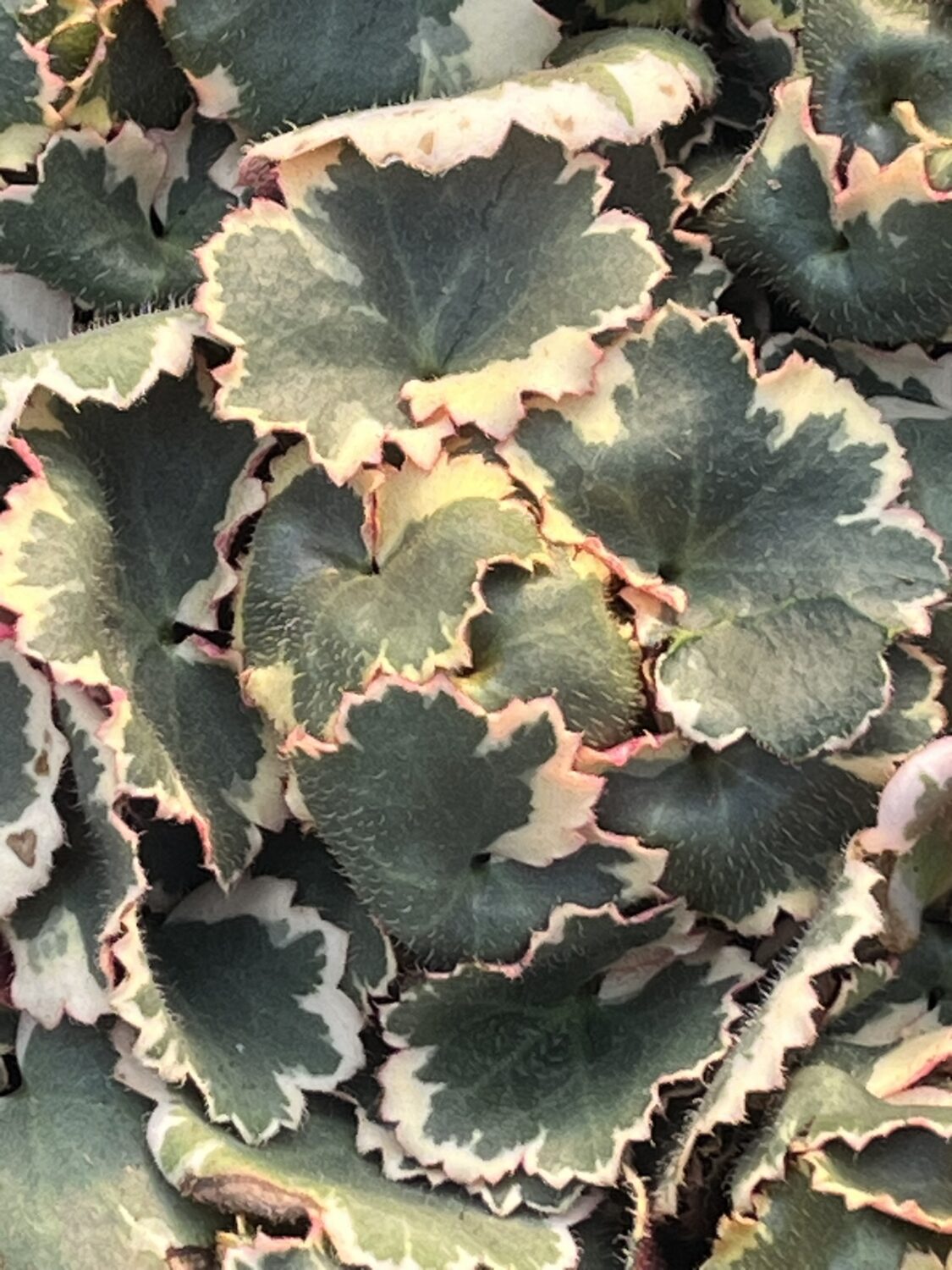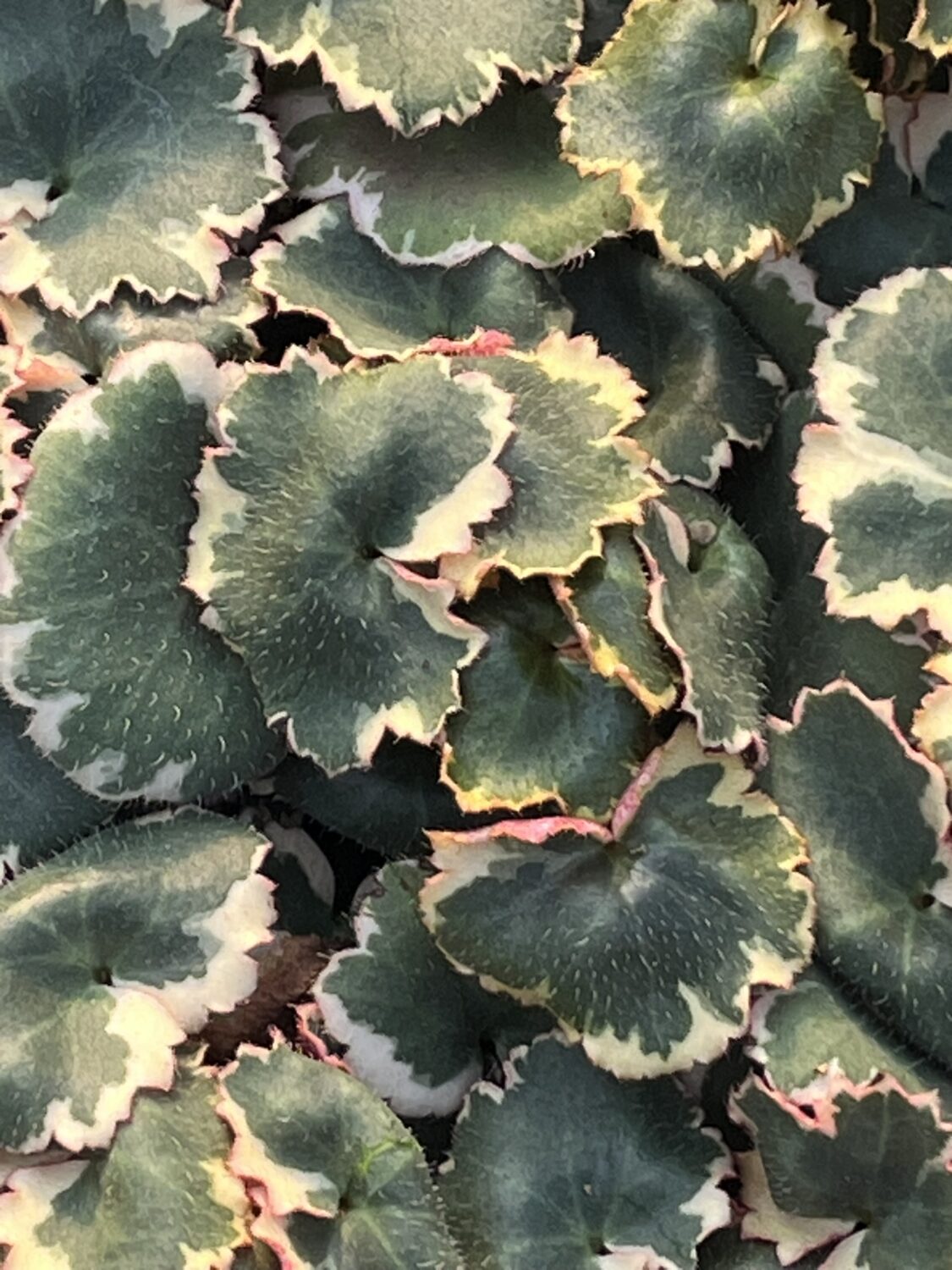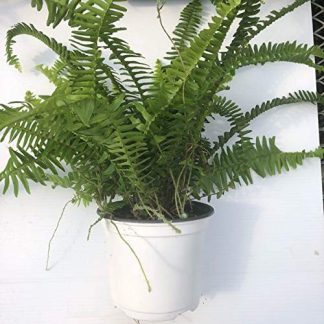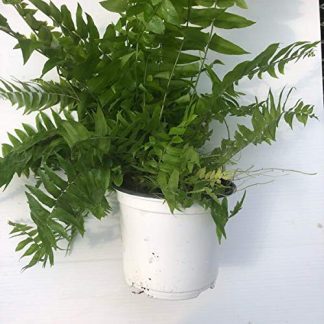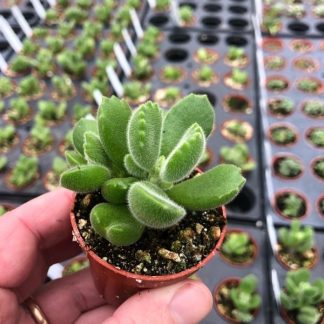Description
Saxifraga stolonifera variegata ‘Variegated Strawberry Begonia’ – A Comprehensive Guide to Growing and Caring for This Unique Plant
Saxifraga stolonifera variegata, commonly called the Variegated Strawberry Begonia or Creeping Saxifrage, is a plant that delights anyone who sees it. It’s a perennial with trailing runners, striking patterned leaves, and dainty flowers that rise above the foliage. This combination makes it a star in both homes and shaded gardens.
If you’ve ever wanted a plant that works as a ground cover outside yet thrives in a hanging basket indoors, this one is for you. It’s forgiving, fast-growing, and decorative in every season. Let’s dive into what makes it so special, how to grow it, and creative ways to showcase its beauty.
What Makes the Variegated Strawberry Begonia So Alluring?
A Plant with Dual Charm
Native to East Asia, Saxifraga stolonifera grows in woodlands where light filters through trees and humidity remains high. The variegated variety brings even more drama to this humble plant. Its rounded leaves have scalloped edges, a velvety surface, and bold cream patterns that often blush pink in strong light. The leaf undersides glow red, giving an unexpected splash of color when viewed from below.
In spring and summer, delicate star-shaped white flowers appear on slender stems that rise above the leaves. Their airy quality adds a soft, whimsical feel—almost like a sprinkling of tiny fireworks.
Versatility Indoors and Out
Few plants transition as seamlessly between indoor and outdoor living as this one. Indoors, it trails beautifully from hanging baskets or spills from decorative pots on shelves and windowsills. Outdoors, it forms lush mats in shaded borders, under trees, or even cascading from rock walls. Its runners root easily, creating a carpet of green and cream wherever it grows.
How to Grow Saxifraga stolonifera variegata
The secret to success with this plant lies in mimicking its woodland origins—cool, moist soil, dappled light, and high humidity. Whether you’re planting indoors or outside, these basics remain the same.
Light Requirements
-
Indoors: Bright, indirect light keeps the variegation vivid. A north or east-facing window is perfect. Avoid harsh midday sun, which can scorch the leaves.
-
Outdoors: Plant in partial to full shade. It shines in dappled light beneath trees or along shaded pathways where other plants might struggle.
Temperature and Humidity
This plant prefers temperatures between 60–75°F (15–24°C). It doesn’t tolerate frost well, so in colder regions, treat it as a houseplant or overwinter it indoors.
Humidity is key. Its native habitat is moist and sheltered, so dry indoor air—especially in winter—can cause stress. Pebble trays, room humidifiers, or grouping plants together all help maintain ideal conditions.
Soil Preferences
Saxifraga stolonifera variegata likes well-draining, slightly acidic to neutral soil. For potted plants, a mix of standard potting soil with added perlite or coarse sand works well. If planting outdoors, enrich heavy clay or compacted soil with compost to improve drainage and fertility.
Watering Guidelines
Keep the soil consistently moist but never soggy. Water when the top inch of soil feels dry to the touch. Always water at the base rather than overhead to protect the fuzzy leaves from fungal spots. In winter, water less often but never allow the soil to dry out completely.
Feeding Schedule
Feed with a balanced, water-soluble fertilizer every 4–6 weeks during the active growing season (spring and summer). Reduce feeding during fall and winter when growth slows.
Planting and Repotting
If growing in containers, plan to repot every 1–2 years in spring. This refreshes the soil, prevents root congestion, and encourages vigorous new growth.
Outdoors, thin the runners as needed to prevent overcrowding. This keeps the patch healthy and gives you plenty of plantlets for sharing or replanting elsewhere.
Caring for Saxifraga stolonifera variegata
While this plant is low-maintenance, a few thoughtful habits keep it thriving and looking its best.
Pruning and Grooming
Remove yellowing or dead leaves regularly. This tidies the plant and improves air circulation. Trim excess runners if you want to keep growth compact—or allow them to roam for a fuller display.
Propagation Made Simple
Propagation couldn’t be easier. The plant naturally produces stolons (runners) with tiny plantlets at the tips. Simply detach these plantlets, pot them in moist soil, and watch them root quickly. This makes it one of the most shareable plants—you’ll soon have plenty to gift to friends or spread through your garden.
Managing Pests and Diseases
-
Pests: Spider mites, aphids, and mealybugs can occasionally appear, especially indoors. Wipe leaves, increase humidity, and treat with neem oil or insecticidal soap as needed.
-
Diseases: Overwatering leads to root rot and fungal leaf spots. Ensure good drainage, avoid soggy soil, and water carefully at the base.
Overwintering Outdoors
In USDA Zones 6–9, this plant can overwinter outdoors with minimal protection. Mulch around the base to insulate the roots. In colder climates, lift and bring it indoors before frost. It adapts well to life inside over winter, provided it has enough light and humidity.
Creative Ways to Use the Variegated Strawberry Begonia
Its trailing habit, soft textures, and unusual color make this plant incredibly versatile in design.
Indoor Displays
-
Hanging Baskets: Let runners cascade down for a dramatic effect.
-
Shelf or Mantel Accents: Place in decorative pots where leaves can spill gracefully.
-
Mixed Arrangements: Combine with ferns, calatheas, or begonias for layered, tropical displays.
Outdoor Plantings
-
Ground Cover: Use under trees or along shaded garden paths for a lush carpet of foliage.
-
Rock Gardens or Walls: Plant in crevices where runners can spill naturally over edges.
-
Mixed Shade Beds: Pair with hostas, astilbes, or heucheras for rich contrasts in leaf shape and color.
Troubleshooting Common Problems
Even resilient plants face challenges. Here’s how to handle the most common ones:
-
Leaf Discoloration: Usually caused by too much sun or too little water. Adjust conditions to correct it.
-
Leggy Growth: Often due to insufficient light. Move to a brighter spot with indirect light.
-
Slow Growth: May indicate nutrient deficiency or poor soil. Fertilize during growing season and ensure proper drainage.
-
Pests: Dry air invites spider mites. Boost humidity and treat promptly with neem or insecticidal soap.
Why Add This Plant to Your Collection?
The Variegated Strawberry Begonia is more than just another houseplant. It’s a conversation starter with year-round appeal. Its velvety leaves, charming flowers, and ease of propagation make it rewarding for beginners and seasoned gardeners alike.
Unlike many decorative plants, it thrives in low light and shaded conditions—those tricky spots most plants dislike. Whether you’re filling a shady garden bed or brightening an indoor nook, this plant adapts beautifully.
Growing it is also a way to bring a bit of woodland magic into your life. Each runner, each tiny star-shaped bloom, feels like a reminder of nature’s quiet artistry. And once you have one plant, you’ll quickly have many more to share.
A Living Tapestry to Treasure
Few plants strike such a balance between beauty, adaptability, and ease of care. Saxifraga stolonifera variegata offers all three in abundance. It’s perfect for shaded corners, hanging baskets, or cascading over rocks. It rewards even minimal attention with lush growth and delicate blooms.
Bring one into your home or garden, and watch as it weaves a living tapestry—soft leaves trailing, variegated patterns glowing, and tiny flowers dancing in the breeze. In no time, you’ll see why so many plant lovers treasure this charming perennial.

